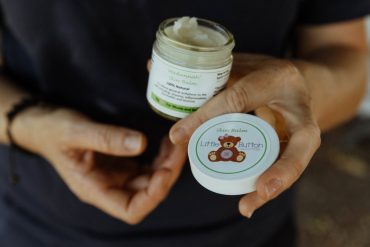My new midwife (and her back up) were passionately supportive of the idea. As it had never been done before in our hospital, she arranged a meeting with the head hospital midwife, the obstetrician, and the head theatre nurse. Together they wrote a practical birth plan that thought through the best ways to manage safety and sterility, whilst integrating my requests for witnessing the birth, delayed cord clamping, and having immediate skin-to-skin with no further intervention with the baby (as long as there were no causes for concern about my baby’s health, obviously). These included things like having my blood-oxygen monitor put on my non-dominant hand, freeing up my dominant hand to hold my baby on my chest, wearing a gown backwards and having my heart-rate monitor pads placed on my back, freeing up my chest so it was completely clear for my baby to lie on and the surgeon wearing a double layer of gloves so he could have one pair removed after passing the baby over to my midwife to lay on me, to maintain sterility in the surgical site.
As one more little lesson from the universe to me about the futility of the illusion of control, I went into labour the day before my scheduled c-section. On Labour Day!
My midwife was in another birth. Her back-up had a stomach bug. The back-up, back-up was away in Wellington. The anaesthetist I had briefed at a pre-op appointment was not on call. I had the on-call hospital midwife (firmly briefed by my LMC between contractions with her other labouring mother) and the on-call anaesthetist. Thankfully, my obstetrician WAS on call. The team were happy and confident to follow the plan, led by the obstetrician.
You read the first paragraph, so I spoiled the ending. My birth went without a hitch. In fact, the hospital staff found it to be such an amazing experience that they asked me to come back and present about woman-centred c-sections to a number of staff trainings, including the theatre nurses, the LMCs, hospital midwives, and obstetricians.
They also took my birth plan and made it into a guideline for future woman-centred c-sections at the hospital, as well as a nearby city hospital.
Small town New Zealand leading the way for the big guys, whoop! (It’s also uploaded as a file in the awesome VBAC Support Aotearoa Facebook group, if you happen to be in the throes of preparing for all birth options yourself right now).
April was International C-Section Awareness Month, and this week is Maternal Mental Health Awareness Week. I now work in Maternal Mental Health, and I see time and time again how the birthing experience can have a profound impact on postnatal mental wellbeing.
There is still a culture of “your experience of birth doesn’t matter, all that matters is a healthy baby”. This could not be further from the truth. Research specifically looking at caesarean section and the links to postnatal depression and anxiety fails to tease out the factors within the experience of the c-section that may be having a more direct impact. For example: feelings of loss of control, and grief for loss of the expected birth experience. Where it is medically indicated (i.e. safe for the baby and the mother), woman-centred c-sections are one option that may go a long way to reducing postpartum distress.
Holly Coombes is a Clinical Psychologist and mother to three fantastic little people. She is passionate about nurturing the fledgeling relationships between parents and their infants, with a particular focus on emotional wellbeing.











Wow love love love this artcile! Thank you for sharing your story! I am passionate about helping mummas recovering from csections and feel so blessed that you have opened your birth stories to help empower other mummas on their journey!
So excited about the natural csection potential for future mummas!